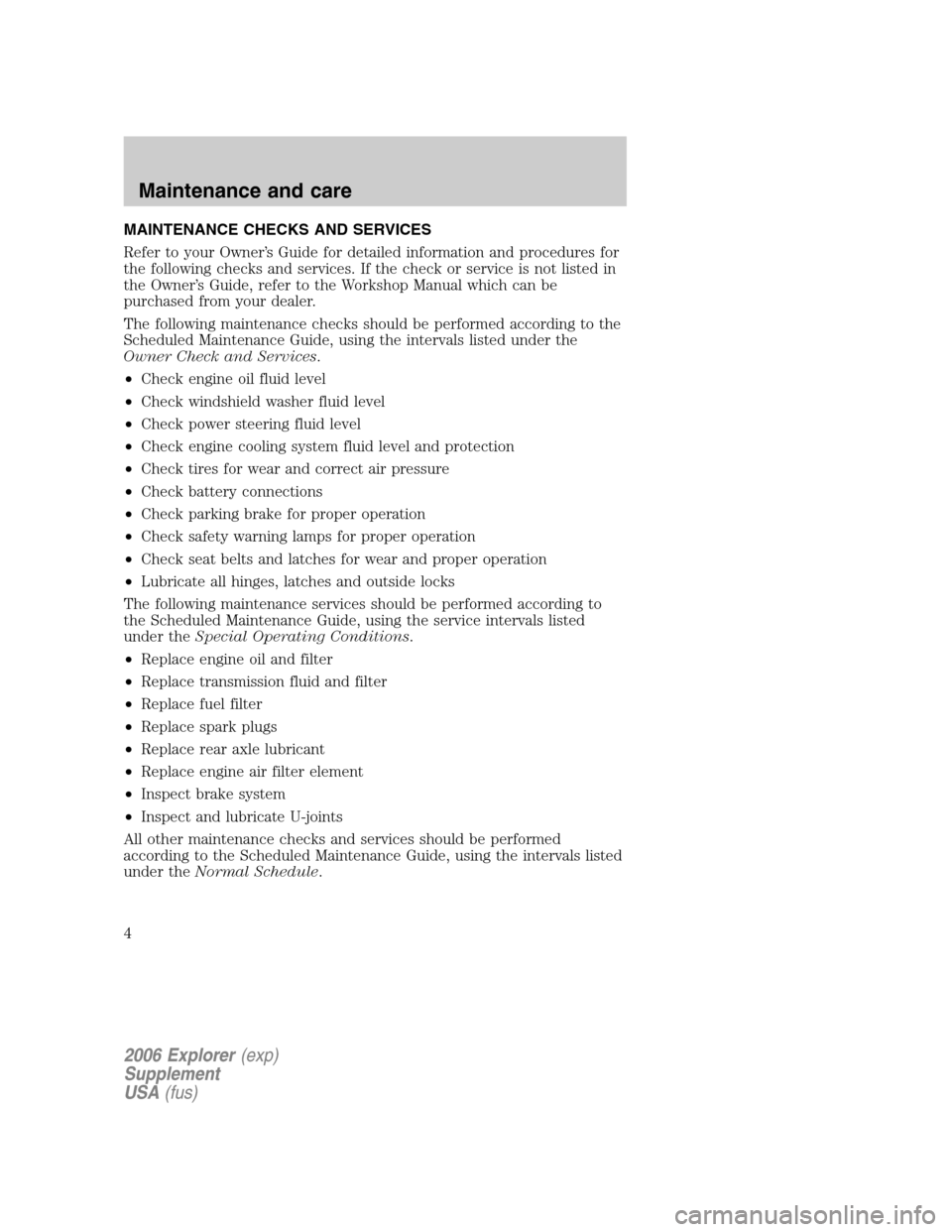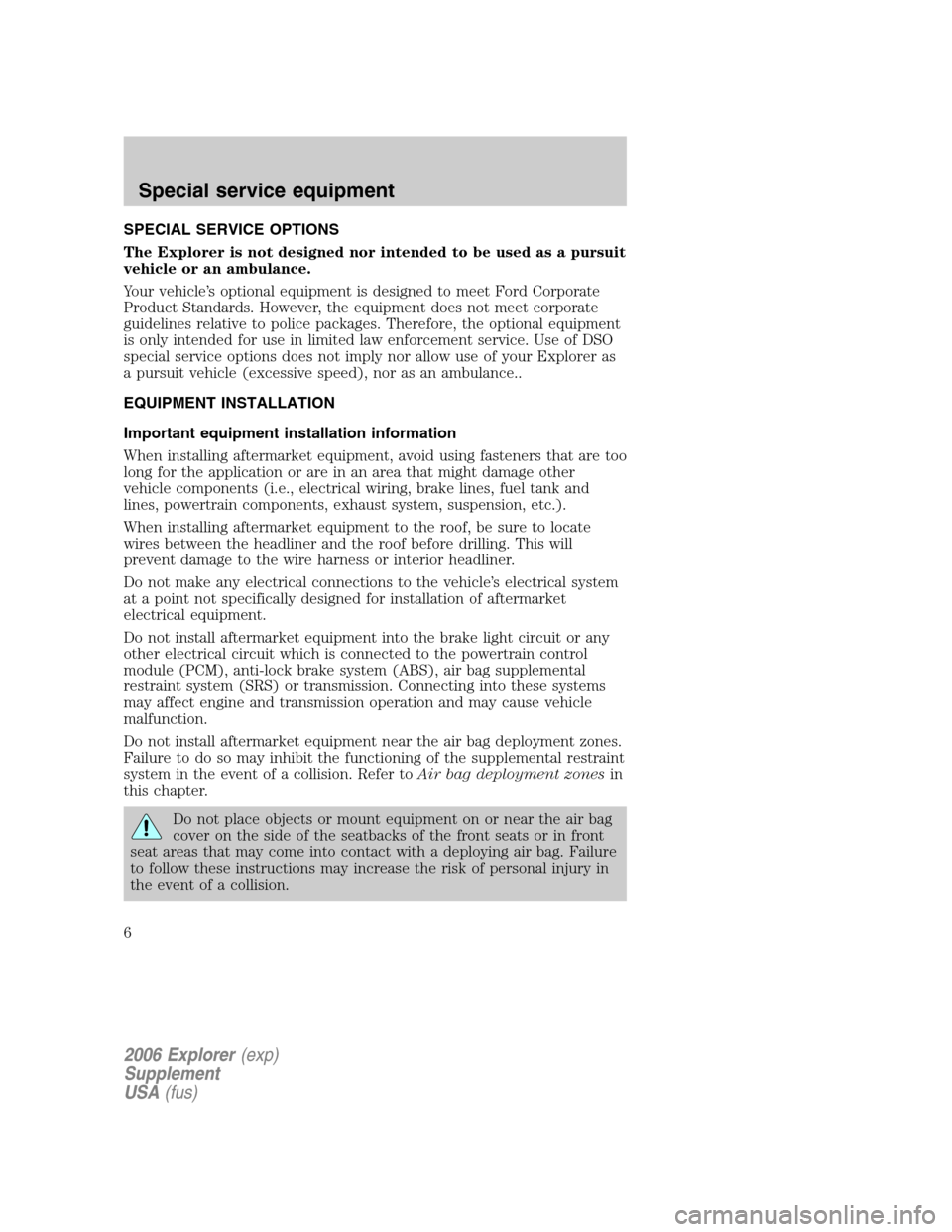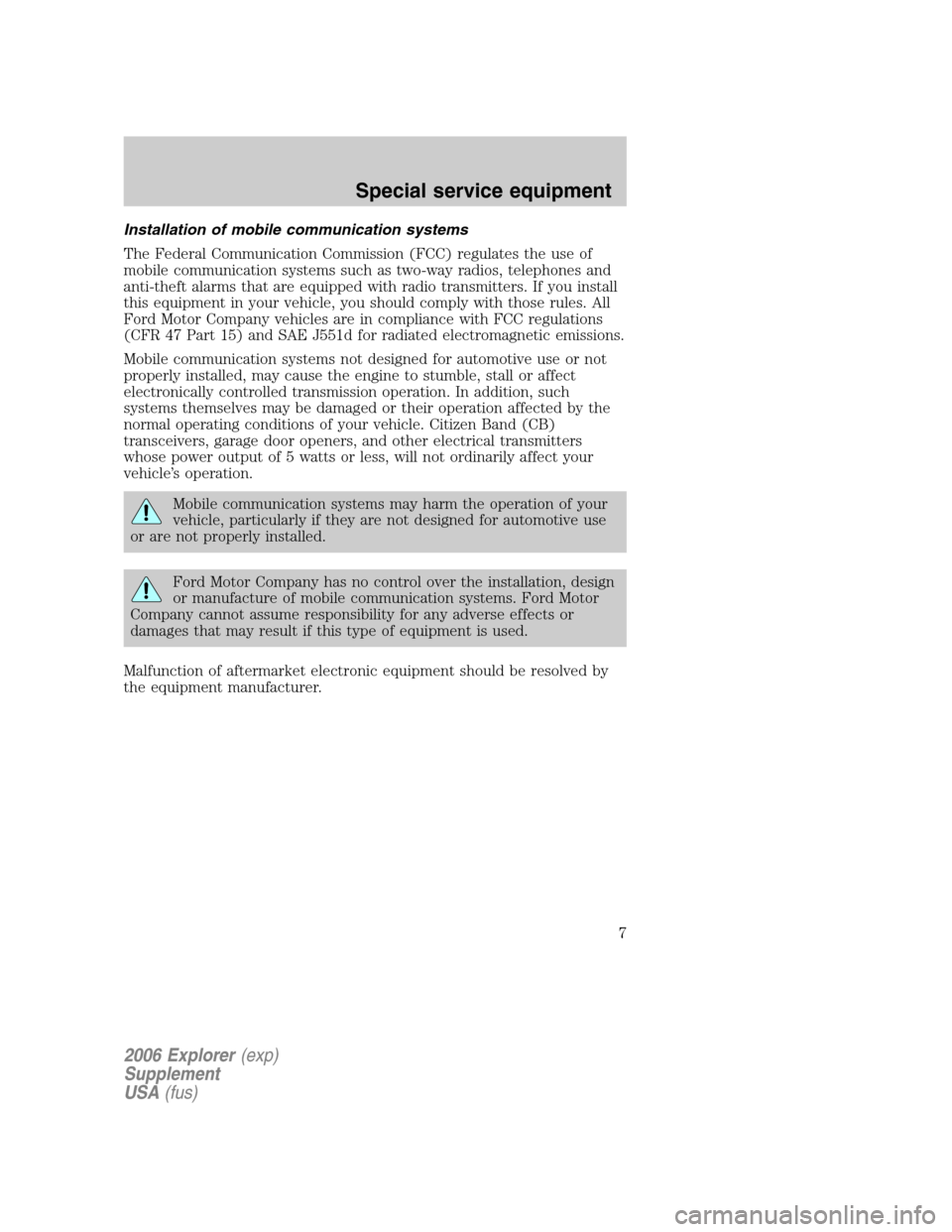Page 4 of 12

MAINTENANCE CHECKS AND SERVICES
Refer to your Owner’s Guide for detailed information and procedures for
the following checks and services. If the check or service is not listed in
the Owner’s Guide, refer to the Workshop Manual which can be
purchased from your dealer.
The following maintenance checks should be performed according to the
Scheduled Maintenance Guide, using the intervals listed under the
Owner Check and Services.
•Check engine oil fluid level
•Check windshield washer fluid level
•Check power steering fluid level
•Check engine cooling system fluid level and protection
•Check tires for wear and correct air pressure
•Check battery connections
•Check parking brake for proper operation
•Check safety warning lamps for proper operation
•Check seat belts and latches for wear and proper operation
•Lubricate all hinges, latches and outside locks
The following maintenance services should be performed according to
the Scheduled Maintenance Guide, using the service intervals listed
under theSpecial Operating Conditions.
•Replace engine oil and filter
•Replace transmission fluid and filter
•Replace fuel filter
•Replace spark plugs
•Replace rear axle lubricant
•Replace engine air filter element
•Inspect brake system
•Inspect and lubricate U-joints
All other maintenance checks and services should be performed
according to the Scheduled Maintenance Guide, using the intervals listed
under theNormal Schedule.
2006 Explorer(exp)
Supplement
USA(fus)
Maintenance and care
4
Page 6 of 12

SPECIAL SERVICE OPTIONS
The Explorer is not designed nor intended to be used as a pursuit
vehicle or an ambulance.
Your vehicle’s optional equipment is designed to meet Ford Corporate
Product Standards. However, the equipment does not meet corporate
guidelines relative to police packages. Therefore, the optional equipment
is only intended for use in limited law enforcement service. Use of DSO
special service options does not imply nor allow use of your Explorer as
a pursuit vehicle (excessive speed), nor as an ambulance..
EQUIPMENT INSTALLATION
Important equipment installation information
When installing aftermarket equipment, avoid using fasteners that are too
long for the application or are in an area that might damage other
vehicle components (i.e., electrical wiring, brake lines, fuel tank and
lines, powertrain components, exhaust system, suspension, etc.).
When installing aftermarket equipment to the roof, be sure to locate
wires between the headliner and the roof before drilling. This will
prevent damage to the wire harness or interior headliner.
Do not make any electrical connections to the vehicle’s electrical system
at a point not specifically designed for installation of aftermarket
electrical equipment.
Do not install aftermarket equipment into the brake light circuit or any
other electrical circuit which is connected to the powertrain control
module (PCM), anti-lock brake system (ABS), air bag supplemental
restraint system (SRS) or transmission. Connecting into these systems
may affect engine and transmission operation and may cause vehicle
malfunction.
Do not install aftermarket equipment near the air bag deployment zones.
Failure to do so may inhibit the functioning of the supplemental restraint
system in the event of a collision. Refer toAir bag deployment zonesin
this chapter.
Do not place objects or mount equipment on or near the air bag
cover on the side of the seatbacks of the front seats or in front
seat areas that may come into contact with a deploying air bag. Failure
to follow these instructions may increase the risk of personal injury in
the event of a collision.
2006 Explorer(exp)
Supplement
USA(fus)
Special service equipment
6
Page 7 of 12

Installation of mobile communication systems
The Federal Communication Commission (FCC) regulates the use of
mobile communication systems such as two-way radios, telephones and
anti-theft alarms that are equipped with radio transmitters. If you install
this equipment in your vehicle, you should comply with those rules. All
Ford Motor Company vehicles are in compliance with FCC regulations
(CFR 47 Part 15) and SAE J551d for radiated electromagnetic emissions.
Mobile communication systems not designed for automotive use or not
properly installed, may cause the engine to stumble, stall or affect
electronically controlled transmission operation. In addition, such
systems themselves may be damaged or their operation affected by the
normal operating conditions of your vehicle. Citizen Band (CB)
transceivers, garage door openers, and other electrical transmitters
whose power output of 5 watts or less, will not ordinarily affect your
vehicle’s operation.
Mobile communication systems may harm the operation of your
vehicle, particularly if they are not designed for automotive use
or are not properly installed.
Ford Motor Company has no control over the installation, design
or manufacture of mobile communication systems. Ford Motor
Company cannot assume responsibility for any adverse effects or
damages that may result if this type of equipment is used.
Malfunction of aftermarket electronic equipment should be resolved by
the equipment manufacturer.
2006 Explorer(exp)
Supplement
USA(fus)
Special service equipment
7